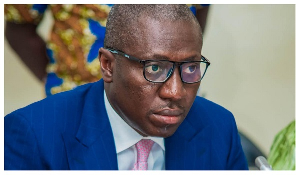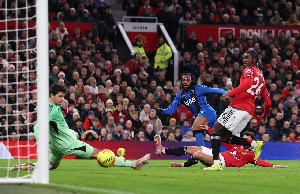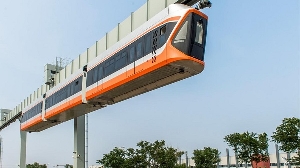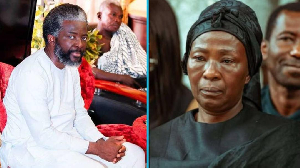Fellow Ghanaians, permit me to use this opportunity to first wish my role model, His Excellency, former president John Agyekum Kufuor, a very happy birthday, and second to share some thoughts with you with regard to his remarkable achievements as a president of the Republic between 2001 and 2009.
In sharing this thought, I would urge my noble readers not to lose sight of the fact that, Kufuor unlike Osagyefo Kwame Nkrumah and John Mahama, never had access to special funds left over by the British Colonist or the oil revenue. Neither did he have a smaller population of 6m, longer tenure of office, nor Preventive Detention Act to make Ghana, a one party state. In this way, you would agree with me as to why Kufuor remains the most successful president of Ghana, and therefore, must be celebrated every year. The write-up is in two parts.
According to Martin Luther King Jr,; "The ultimate measure of a man is not where he stands in moments of comfort and convenience, but where he stands in times of challenge and controversy". To this, Gordon Brown, former British prime minister adds; "Leadership is tested not by what happens in the best of time but by what happens when things are difficult".
Kufuor was never scared of the culture of silence, tyranny, economic hardship, corruption, human rights abuses, lawlessness and police brutalities that had characterised the 19 year dictatorial rule of Rawlings’ P/NDC administration. As we all saw, tribalism had been covertly and overtly been institutionalised in all public and private institutions similar to what we are witnessing today under Mahama administration.
The first proof of a man’s incapacity to achieve, according to B.R. Hayden, is his endeavouring to fix the stigma of failure on others. This has been the norm of other presidents such as Mills, Mahama . However, as a man born to succeed, Kufuor did not see the state of our economy as a yardstick for blame games, but rather as a challenge to modify his approach for better things to come through the party’s campaign message of positive change. He moved quickly to bring to the fore credible programmes and policies with competent team to execute them; and the excellent work is there for all those whose five senses, in addition to their common sense, are working to perfection, to see, hear, feel, taste, smell and judge objectively. Without much ado, I will just highlight some of the remarkable feats chalked by former president Kufuor.
ON SOCIAL INFRASTRUCTURE
• Kufuor's tenure witnessed the construction of two new sports stadia at Essipong and Tamale; the rehabilitation of both Accra and Kumasi sports stadia, and another uncompleted sports complex in Cape Coast.
• Under Kufuor, a new Presidential Palace was built to house the president and his family; the Accra-Tema commuter railway line was constructed, and the Keta Sea Defence wall was built to protect the people of Keta from being drowned.
• A $622m loan was secured for the construction of the Bui Dam & Bui City Project; the Boankra Inland Port was started (now abandoned); major feeder and trunk roads (Accra-Kumasi-Aflao-Kasoa-Cape Coast, Aburi), several by-passes in Accra and Kumasi including the Sofoline and Asafo interchange, and George Walker Bush 14km High Way were all constructed.
• The Peduase Lodge, which had been abandoned was restored; several boreholes were drilled to end the perennial water problems in Cape Coast and Tamale; the Aboadze Thermal Plant was expanded; the Kofi Annan ICT Centre for Excellence, and state-of-the art wood village at Sokoban in Kumasi for Anloga carpenters were all built.
• Another legacy of Kufuor is the construction of the Accident and Emergency Centre with a landing base at the Komfo Anokye Teaching Hospital (KATH). This has saved several precious lives.
• Besides, 56 existing senior high schools were upgraded as Model Schools; two institutions (University of Education, Winneba, and University of Mines & Technology) were given autonomy to run as public universities, UDS had Campuses at Wa and Bolgatanga, 21 new senior high schools, 1,334 new JHS blocks, 1,331 primary schools, and 5,164 pre-schools were built.
• Also, over 5,000 affordable housing units at various parts of the country were built. A cocoa processing plant was built in Kumasi. The West African Gas Pipe Line was nearly completed. There was expansion of the road network from 39,000 km of accessible roads to 65,000 km by 2008.
• The Ghana @ 50 ‘legacy’ projects like recreational parks, renovation of public buildings, and historical monuments across all the 10 regions and their district capitals were built. The government also built 14 fishing harbours in our fishing communities.
ON POLICIES & PROGRAMMES
• The Kufuor government introduced free basic education through the capitation grant (fee- free). There was school feeding programme where pupils from some selected public basic schools were given one hot meal a day.
• The National Health Insurance Scheme was introduced to replace the cash and carry system and make health care affordable. There was also the introduction of free maternal care to reduce child mortality.
• The government frequently released brand new buses to GPRTU, and introduced the metro mass transit, replaced the Ghana Airways with Ghana International Airlines (all meant to improve the transportation system.
• The NPP introduced the Northern Development Fund with a US$25m seed fund to reduce the North-South poverty gap; free bus ride for school kids, brought Zoom Lion Company Limited to rid our cities of filth, created Youth Fund with a $50m seed money and instituted the National Youth Employment Programme, which rolled out seven programmes including community police, teaching assistance, health care, agric extension, etc to reduce the country’s high unemployment.
• Kufuor also introduced the mass cocoa spraying exercise, frequently increased the producer price of cocoa; subsidised fertilizer, and made prompt payment of bonuses to cocoa farmers.
• In his quest to mechanise agriculture, the Kufuor government imported 3,331 brand new tractors, but unfortunately, Mahama Ayariga, and Alban Bagbin used their positions in government to buy some at only GHC1,000 in 2009.
• The annual cocoa yield increased from 350 metric tonnes in 2000 to 750 metric tonnes in 2006 with an income of US$1bn to the economy. By 2010, Ghana had hit 1m cocoa production. This feat alone moved Ghana from the 4th position to the 2nd position in terms of the world’s leading producers of the product.
• The size of the Ghana's economy quadrupled from US$3.9m in 2008 to US$16.3m in 2008, thus ending the year with GDP growth rate of 8.4% (excluding oil revenue).
• Whilst inflation was reduced from 40% in 2000 to 9.8% in 2006 (single digit) and later 18% in 2008, interest rate fell from 50% to 25% during the period under consideration. The daily minimum wage was increased from 42Gp (4,200 old cedis) in 2000 to GHC2.25 (22,500 old cedis) in 2009.
• A New Education Reform was put in place in 2007 with special emphasis on Maths, Science, Vocational and ICT. Kindergarten education officially became part of our basic education system.
• The admission of JHS graduates into SHS was computerised to reduce corruption and hassle of parents; there was Baah-Wiredu Laptop project aimed at giving one laptop to every school child.
• All the 38 Teacher Training Colleges were upgraded into tertiary status (Colleges of Education); Distance education programme was introduced for teachers and workers.
• The government also introduced Untrained Teacher Education Programme for Pupil Teachers to become trained teachers, Access Course to Teacher Training Colleges for SHS graduates who could not do well in Maths and English. The purpose was to upgrade the knowledge of the teacher, beef up the teacher population, and subsequently help to address the falling educational standards in the country.
• Private universities sprung from 4 to over 50, whilst existing infrastructure in the public universities and other public tertiary institutions were expanded through the GETFund.
• The SSNIT Loan Scheme was restructured for students to take more loans. Plans were far advanced to start not only Single Spine Salary Structure for public sector workers, but also a new 3-tier pension scheme for both private and public sector workers.
Please, read the Part II of this article which highlights good governance under the Kufuor administration as well as his fallouts.
Katakyie Kwame Opoku Agyemang, Asante Bekwai-Asakyiri
(katakyiepaulu@gmail.com)
0202471070 // 0547851100 // 0264931361
Opinions of Wednesday, 9 December 2015
Columnist: Agyemang, Katakyie Kwame Opoku














